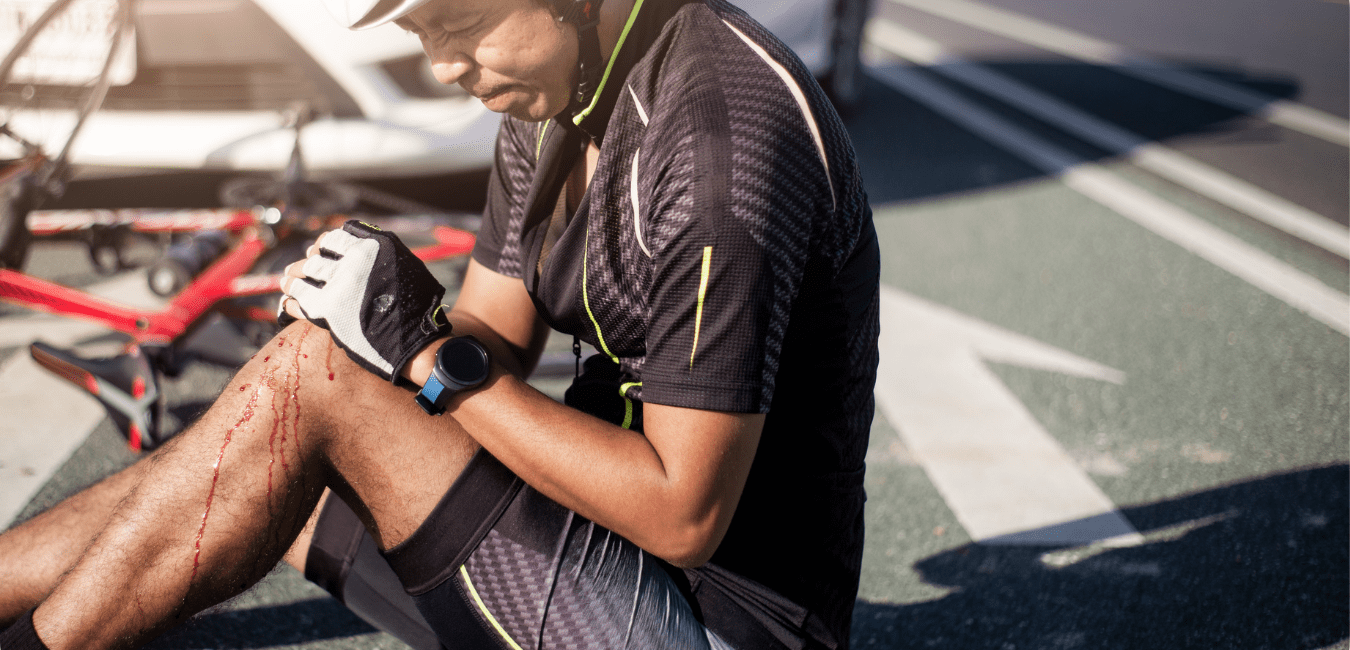Colorado Bicycle Accident Lawyer
According to The Colorado Department of Transportation (CDOT), the rate of bicyclist fatalities in Colorado has been increasing since 2014. Bicyclist deaths made up 2.5% of vehicle-related fatalities in 2017, so it is not a common occurrence, but is an unfortunate and brutal one when it occurs.
A traumatic brain injury (TBI) is the most common injury in a bicycle accident. Bicycles, because of how exposed they are compared to other forms of transport like cars, make riders vulnerable to damage to their head and exposed skin. Unlike on a motorcycle, there is minimal protective gear suggested for being on a bicycle, so if you were hit as a bicyclist, you may get a TBI and road rash as a result. To practice safe bicycling, make sure you wear a helmet.
However, like on a motorcycle, because of the nature of the bicycle, the road conditions can affect a bicyclist more so than a motorist. For this reason, bicyclists are more susceptible to things like weather conditions, lose-gravel, or potholes, and should take care to avoid them so they don’t get thrown from their bicycles.
What Rights Do Bicyclists’ Have In Colorado?
Bicyclists are credited as having the same rights as automobile drivers on the roads, with some exceptions. Bicyclist regulations are specifically listed under C.R.S. § 42-4-1412. Here are some notable rights that Colorado bicyclists have on the roads.
- Stopping at stop signs and lights
- At night, having yellow front and red rear lights on bike
- Signaling when turning
- Riding in the same direction as traffic
- Yielding to walking pedestrians
- Riding side by side with a second bike (as long as it’s not interfering with traffic flow)
- Passing cars must keep 3-feet between them and bicyclists at all times
- Mandatory registration and licensing of bicycles
These measures are in place to keep bicyclists safe and hold them, and motorists, accountable for each other’s safety as operators of vehicles on the road.
In The Event Of A Bicycle Accident, There A Few Things You Should Do.
- Move your bicycle out of traffic, if possible
- Wait for emergency services. Medical personnel will evaluate you when they arrive
- Do not leave the scene or touch any evidence
- Take photos of the vehicles involved in the accident, road conditions, debris, traffic signals, signage – anything that could be pertinent to building a case
- Exchange insurance information with the other involved driver(s)
- File a police report
- Don’t speak to any insurance agents until you get the best bicycle accident lawyer
Firstly, you should get the police involved. Even if the at-fault driver flees the scene, documenting the accident immediately following it could help as your situation progresses. Should you find yourself deciding to proceed with a claim, you would hate to be wishing that you had kept a better record of these things earlier so that you could have documented a better case. Instead, take proactive steps to protect yourself just in case the effects of your injuries are more long-lasting than you had anticipated.
Even if a Personal Injury lawsuit is not at the forefront of your mind at the time of an accident, insurance claims should be something you are aware of, which is why compiling evidence and records are important for your safety and recovery. If you want to prove to your insurance company, or the other party’s insurance company, that what you say is true, having a police record, medical records, and photos of the accident or injuries help to corroborate your story. If you do decide to pursue a Personal Injury case as well, this is even better. You want to ensure that you are consistently keeping a record of the timeline so that it’s easy to understand the sequence of events.
Do You Have A Case?
Our free, no obligation, consultation gives you the opportunity to talk to an experienced attorney about your situation and gain insight into the best way to proceed. Fill out the form below to schedule.

